
Horse Nutrition – Top Line Score
The Top Line Score came out in other animals, primarily meat animals (hogs, cattle), as a way to determine how much meat was on the hoof. And ultrasound machine would be scanned over the backs of hogs and the back fat was measured as well as the depth of meat. No one dares do this in horses as this would ruin the horse feeding industry. This is why.
**CONTINUED IN ARTICLE TAB**
Related material – Sometimes I have a lot of material here that I have written, podcasted, video blogs and other things. They will be listed in this tab.
Use the browser back button or menu to return to the index of topics.
⬇︎ CLICK ANY IMAGE BELOW TO REVEAL MORE INFORMATION ⬇︎
The Top Line Score came out in other animals, primarily meat animals (hogs, cattle), as a way to determine how much meat was on the hoof. And ultrasound machine would be scanned over the backs of hogs and the back fat was measured as well as the depth of meat. No one dares do this in horses as this would ruin the horse feeding industry. This is why.
Horse owners like to look at a horse with a smooth top line without the bones and ribs showing. To do this they layer enough fat over the top line to cover it up just like we wear clothes to cover our un-muscled bodies. While this looks good, we also want our horses to be athletic. However through feeding them to “look good,” they are actually losing muscle. You can get the details about protein loss in that topic
The top line is made of muscle and muscle is made of protein, specifically the 3 amino acids leucine, isoleucine and valine (the branched chain amino acids). Feeding sugar in the form of grains and high starch pasture and hay will never make muscle. Nor will feeding fat. In fact these will only add fat to cover up the loss of muscle.
The top line starts to be lost at the withers and over time, moves along the back to the tail head. A top line without loss is labeled “A” and as the loss moves towards the tail, it is labeled “B,” “C” and “D.” Another place to look for muscle loss are the muscles between the ribs, the abdominal muscles (“hay belly”) and the cheek muscles. Muscle loss occurs first where muscles are used the most and when feeding to improve the top line, the reverse order occurs. The hay belly is the first to resolve and the withers and cheek muscles are last to fill.
I like combining the TLS with the BCS. With practice you can see a low TLS through a high BCS. However, once a horse’s nutrition is corrected and the BCS is reduced, the poor TLS reveals itself. This tests the courage and conviction of the horse owner because sometimes the muscle loss is startling and returns slowly. Thoroughly understanding the process and the reasons behind what is seen will help owners work through this and achieve the goal of a good BCS and a good TLS.
Any videos related to this topic will be added here. Stay tuned or comment a request.
- Additional tables
- Links to other in house articles
- Links to outside articles
- Reference material used in developing this topic.
There are no related articles here if you don’t see linked items.
TLS A – Muscling throughout the top line from withers to the croup.
It is hard to find a TLS of “A” other than to look at foals and race horses. These are the athletes. Older horses competing well usually also have fat added to cover up irregularities. As a hint, if you see a good looking top line with no loss of muscle at the withers, look to see that the abdomen is also tight. A top line that “looks good” while a “hay belly” exists is impossible.
TLS B – muscling is lost at the withers only while the rest of the top line is muscled.
It is difficult to see these “B” horses as this is thee transition phase. If a horse starts to lose muscling at the withers then grain is usually added to cover up this loss. The horse is usually young but also has access to all the food they want. Starvation cases will skip this phase and are not noticed until there is more severe loss of fat and muscle.
TLS C – the muscle loss extends from the withers to the loin.
This loss is common but is usually not alarming to most owners. More grain is added and saddle fitters are called. It is more commonly seen in “hard keepers” where more grain, supplements or exercise is added thus continuing or increasing the gut inflammation. Many accept this muscle loss as just lack of exercise (usually from being laid up due to an lameness) when in reality it is caused by lack of high quality protein in the diet (specifically leucine, isoleucine and valine) and loss from gluconeogenesis (excess glucose in the diet).
TLS D – the muscle loss extends from the withers to the croup.
The loss of muscle over the whole top line is usually accompanied with an extended abdomen (“hay belly”), poor hooves and other signs of protein loss. A quick look at the diet shows no high quality protein in the food or pasture, over work, starvation, excessive grain being fed or any combination of these.


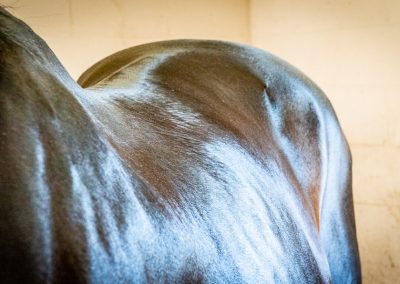
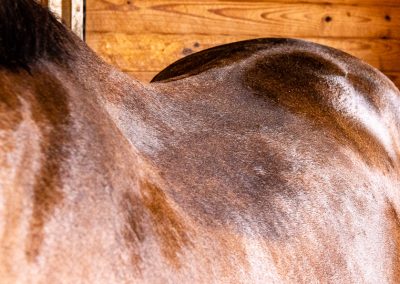
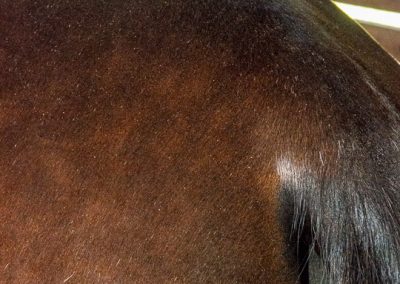
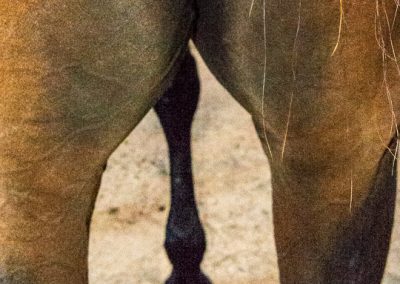
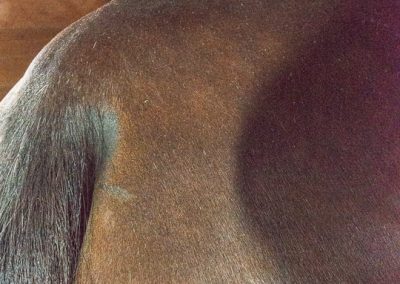
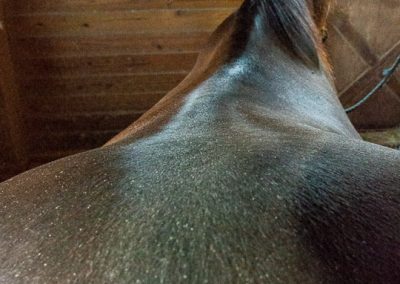
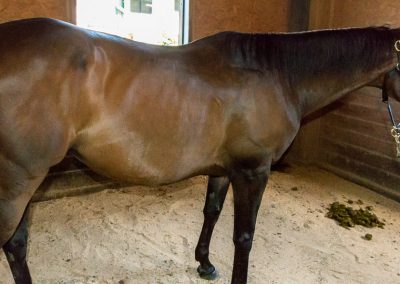
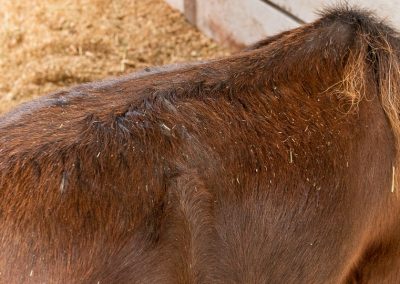
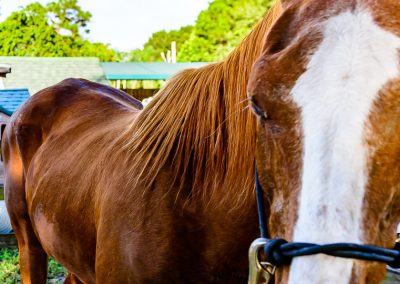
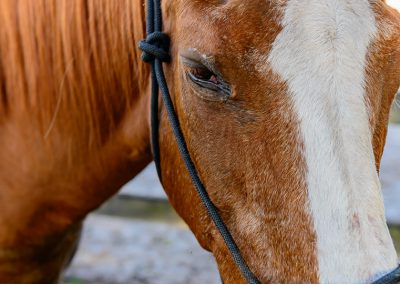
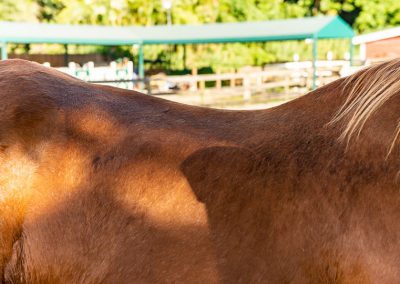
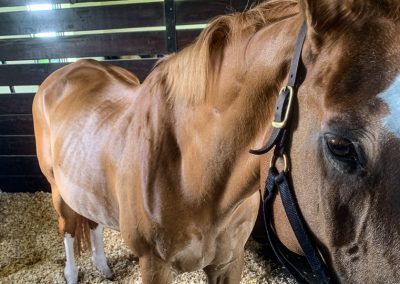
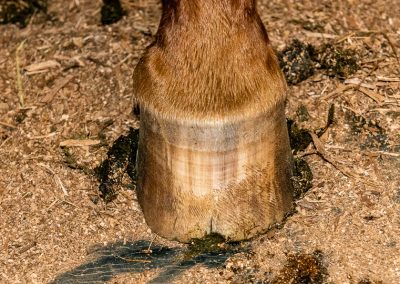
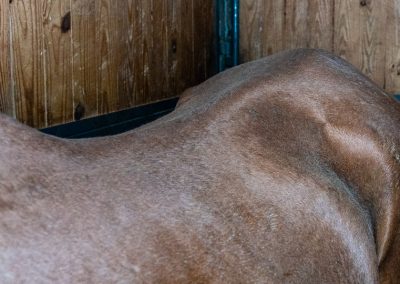

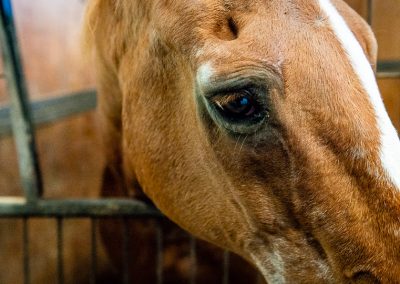
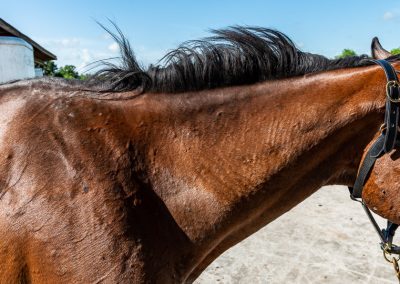
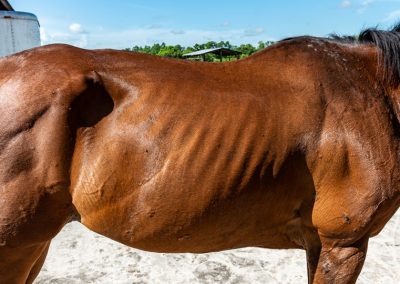
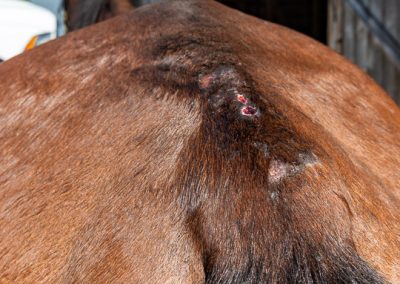
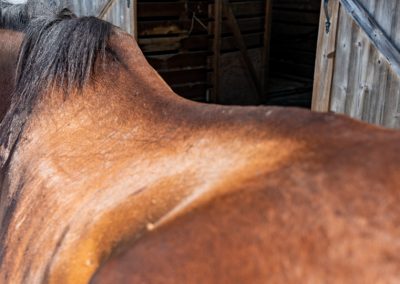
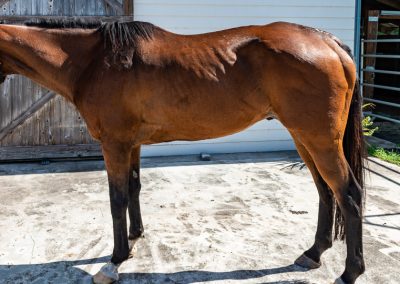
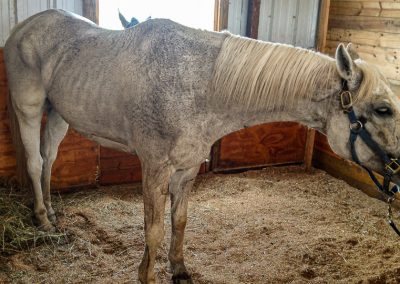
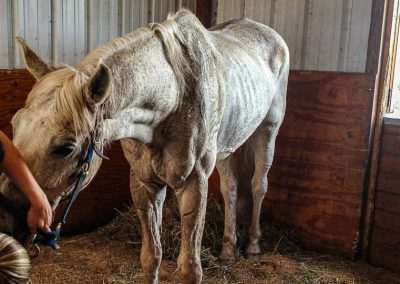
Responses